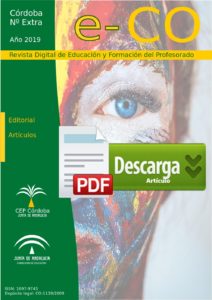AUTORA:
Sol Garre Rubio
Real Escuela Superior de Arte Dramático de Madrid
RESUMEN
Das Letzte es una pieza de minuto y medio de video-danza basado en un poema de Else Lasker-Schüler. La danza y el movimiento de la actriz-bailarina dio origen a Mujer frente al espejo. Este vídeo servirá para introducir la práctica-como-investigación en interpretación en arte dramático que presento en este artículo. El planteamiento marco es “Un cierto sentido de la realidad”, un proyecto de investigación sobre la percepción y los procesos creativos que regulan el comportamiento y actitud del actor y actriz en su comunicación con el espectador. Mujer frente al espejo es una performance-conferencia que explora con el público la calidad de nuestra atención y la disponibilidad necesarias para compartir nuestras experiencias y sensibilidad como seres humanos. Mediante la práctica escénica se debate sobre el significado del “amor en nuestra profesión”, tal y como Michael Chejov definió y relacionó con los procesos psicofísicos que sustentan la presencia y la imaginación en el escenario. Este artículo, en concreto, discute el papel que esta facultad humana juega en la apertura de conciencia y la disponibilidad necesaria para hacer partícipe al artista de su proceso creativo.
ABSTRACT
Das Letzte is one and a half minute dance video based on a poem by Else Lasker-Schüler. The dance and movement of the actress-dancer created Woman in front of the mirror. This short video serves to introduce the practice-as-research concerning theatre acting in this paper. This piece is part of a bigger research project entitled “A certain sense of reality”; an inquiry on perception and creative processes that regulate the behavior and attitude of the actor and actress in their communication with the espectator. Woman in front of the mirror is a performative conference that explores with the audience the quality of our attention and the necessary availability to share our experiences and sensitivity as human beings with others. Stage practice serves as research, with which to explore the idea of “love in our profession”, as defined by Michael Chejov in 1955 and related to the psychophysical processes that sustain the presence and imagination of an actor on stage. This paper discusses the role that this human faculty plays in the open awareness and availability the performer needs in order to involve the artist who she is in her creative process.







